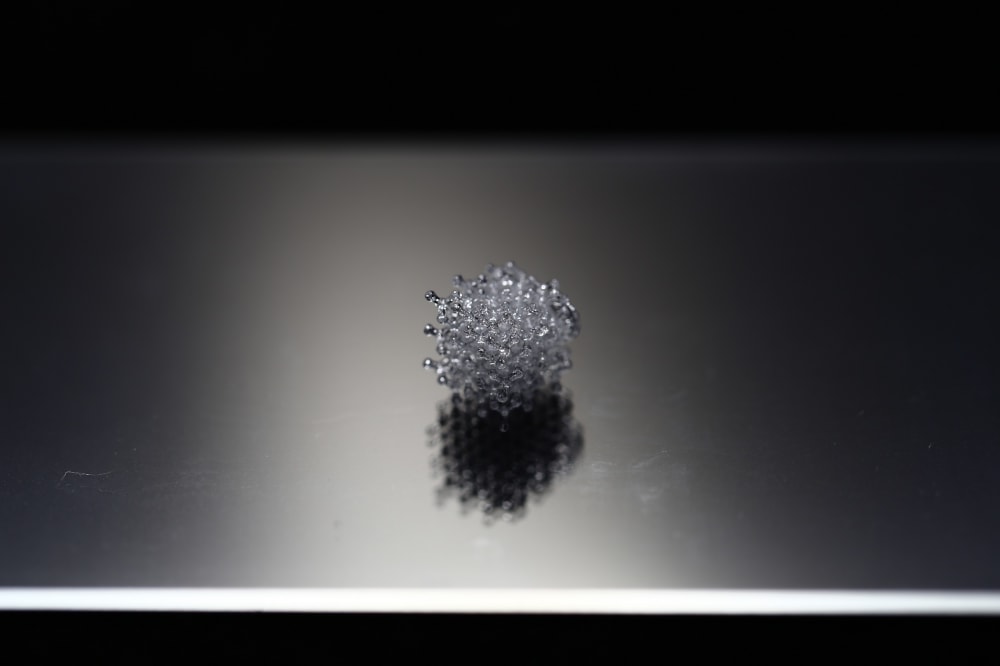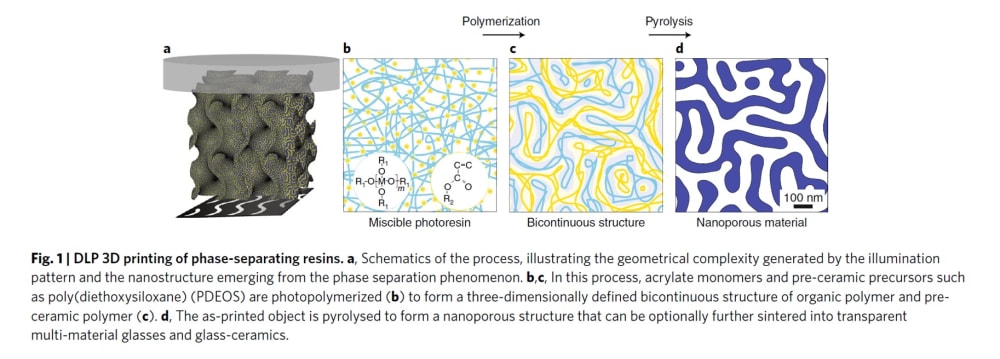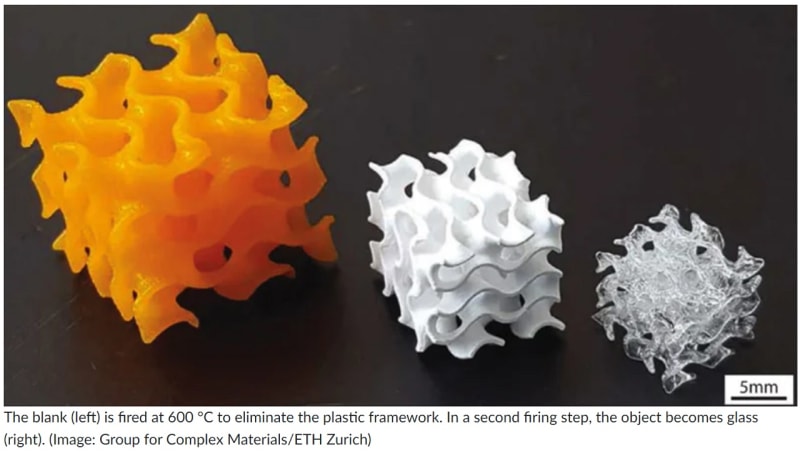

The digital fabrication of oxide glasses by three-dimensional (3D) printing represents a major paradigm shift in the way glasses are designed and manufactured. Automation enabled by the first industrial revolution led to the mechanization of blowing and casting processes. Despite the undeniable advantages brought by automation in terms of reproducibility, quality, and production volume, the symmetric and predominantly flat geometries achieved through these approaches remain remarkably limited compared to the intricate shapes that can be produced by manual artistic glasswork. Only recently, the advent of three-dimensional (3D) printing technologies has opened enticing new possibilities for the manufacture of complex shaped objects in a digital fabrication process. In the context of glasses, 3D printing can potentially reconcile the automation offered by modern industrial processes with even higher geometric complexity than is accessible by manual artistic labor.
We report a digital light-processing 3D printing platform that exploits the photopolymerization-induced phase separation of custom resins to create glass parts with complex shapes, high spatial resolutions, and multi-oxide chemical compositions, opening opportunities to explore functionalities inaccessible by current glassmaking technologies. Our approach relies on a 3D-printable resin that comprises inorganic precursors, a photoactive monomer mixture, and a light-absorbing dye. The printing process takes advantage of a commercially available, desktop digital light processing (DLP) printer, which polymerizes a liquid resin in a layer-by-layer fashion to create complex, high-resolution objects.
At the heart of our approach lies a photo-induced phase-separation process: when illuminated with UV light, the homogenous resin mix splits into a hybrid bicontinuous network, i.e. two interdigitated networks consisting of a polymer-rich and a ceramic-rich phase, respectively. By spatially controlling the intensity of the digital light projection during the printing process, the velocity of polymerization, and thus the morphology of the bicontinuous phases can be locally tuned. The enrichment of inorganic precursors into one of the phases results in porous structures with sub-micrometer pore sizes upon ceramization of the printed objects. Subsequent sintering of these porous bodies in a standard kiln leads to transparent multicomponent glasses with complex geometries and precise spatially controllable chemical compositions.
Because polymerization-induced phase separation is a universal physical process, we envision this technology to be also applicable to a broad range of chemical compositions and additive processes (for example, ink-jet). In analogy to the well-established sol-gel chemistry, a rich variety of inorganic precursors can be potentially structured into porous or dense glasses and glass-ceramics using this additive manufacturing technique.
Despite their enticing optical, physical, and chemical properties, most functional applications of ceramic materials have been limited due to difficult processing and limited design freedom. For this reason, we believe this manufacturing approach could be used for a broad range of technological applications in industry, academia as well as in the arts field.
Video
-
Awards
-
 2020 Manufacturing/Robotics/Automation Honorable Mention
2020 Manufacturing/Robotics/Automation Honorable Mention -
 2020 Top 100 Entries
2020 Top 100 Entries
Like this entry?
-
About the Entrant
- Name:Lorenzo Barbera
- Type of entry:teamTeam members:Lorenzo Barbera, David G. Moore, Kunal Masania, Andre R. Studart
- Software used for this entry:Solidworks
- Patent status:pending








